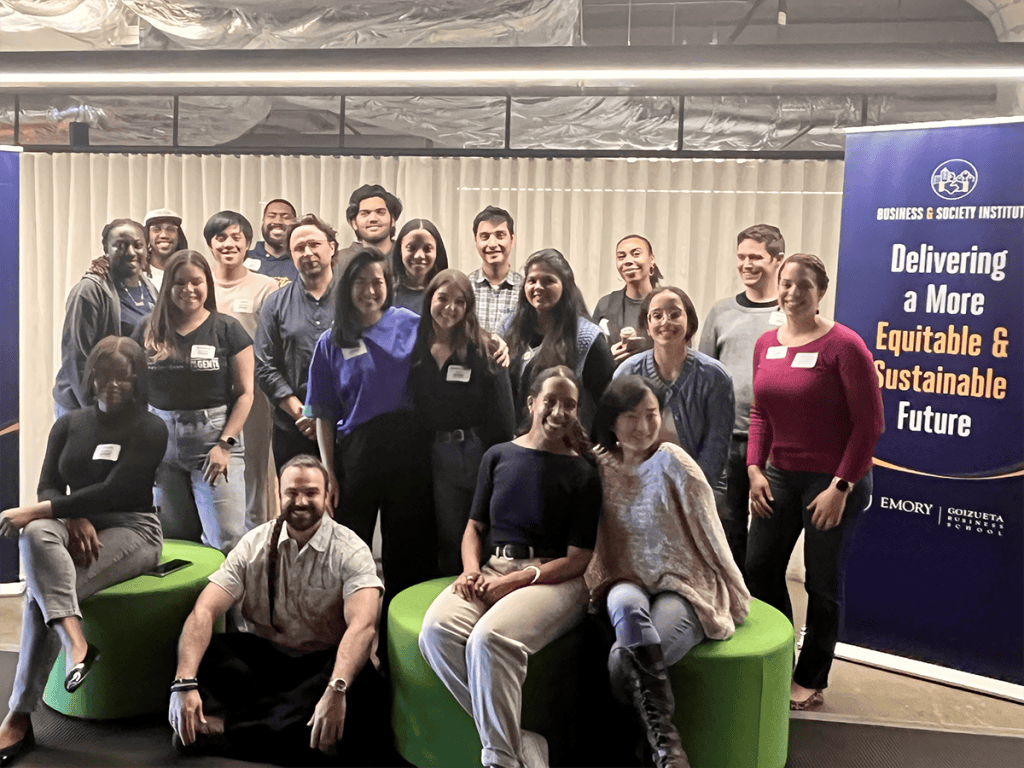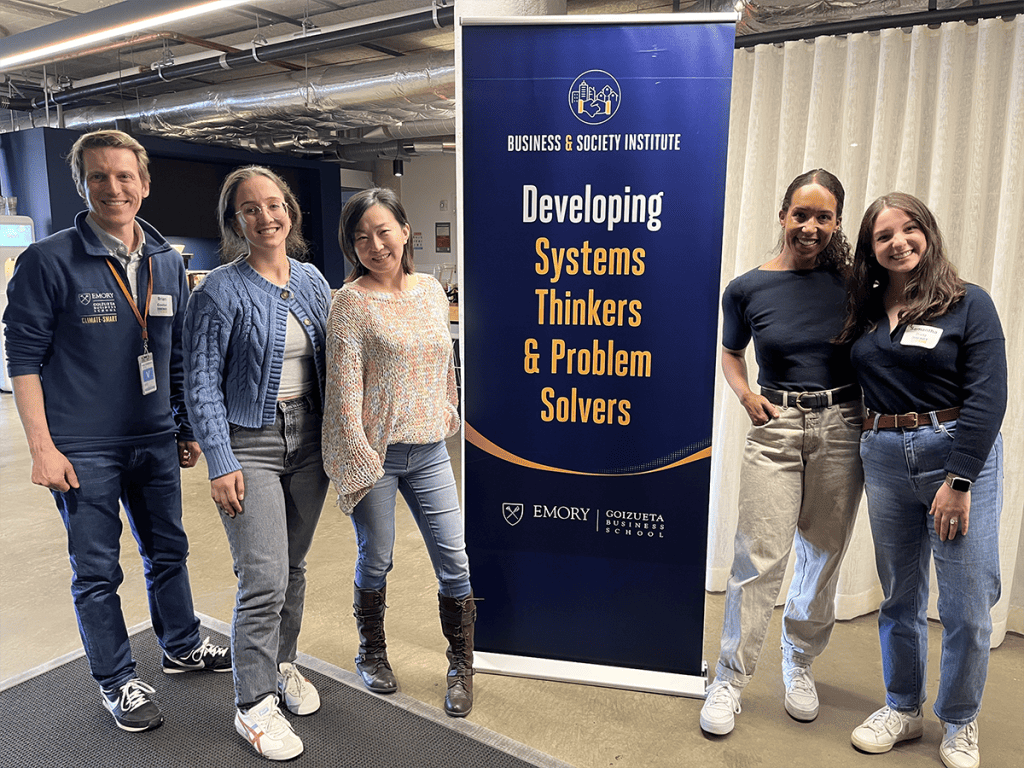From Case Study to City Strategy: Co-designing for Equity in Atlanta
Reflections from a Design Thinking Workshop with Goizueta’s Business & Society Institute
“It’s only been an hour—and through these activities, I can somehow fully empathize with the CEO of a multinational corporation when it comes to economic development initiatives in the city. I never would have thought that would be possible.”
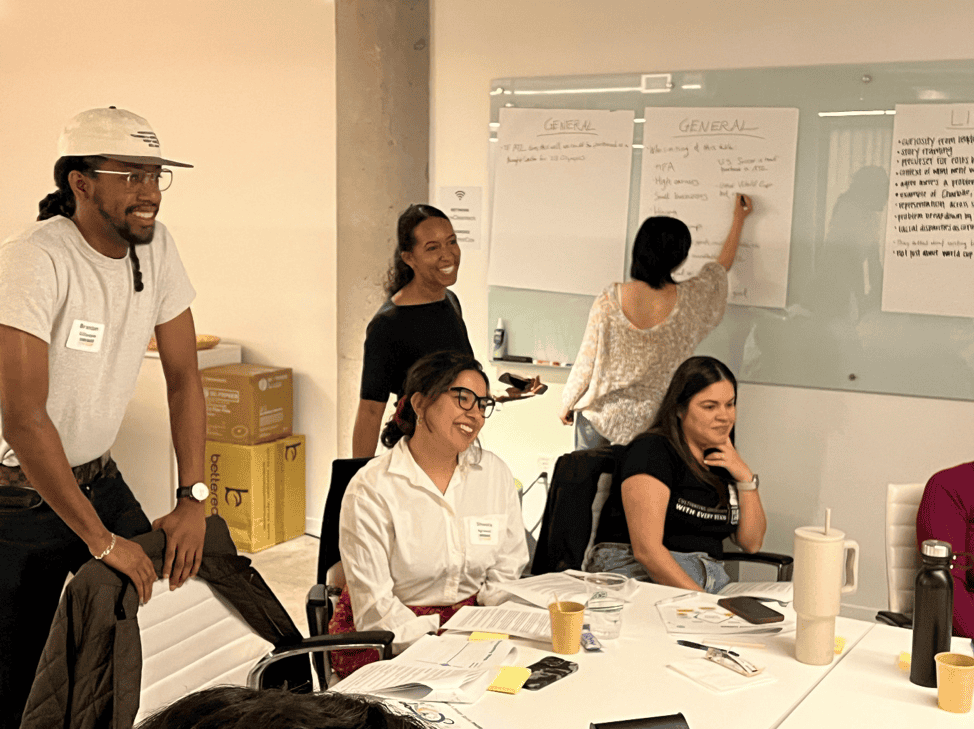
That insight, shared by a Goizueta Business School MBA and Social Enterprise Fellow alum just 60 minutes into our seven-hour design sprint, has stayed with me. Not just because of its honesty, but because of what it revealed: the power of empathy and imagination to dissolve silos we’ve long assumed were fixed.
We were sitting in the Cox Clean Tech Accelerator at Ponce City Market, surrounded by sticky notes, stakeholder maps, and sharp minds committed to social impact. This wasn’t just another workshop. It was a shared experiment in designing across difference—and in challenging the ways we’re taught to lead in business school and beyond.
Together with current student fellows and alumni from the Business & Society Institute (BSI), we came together to explore one powerful, unfinished question:
How might we foster collective action across sectors in Atlanta to create scalable solutions to combat economic inequity?
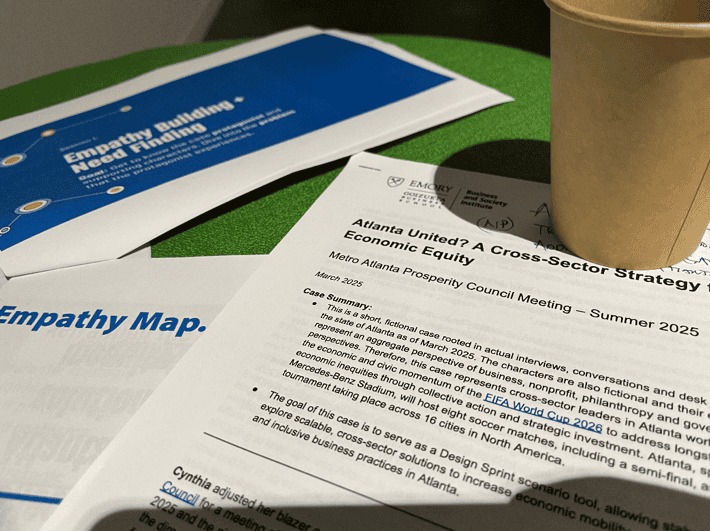
That question—at once ambitious and essential—served as the backbone of our day-long design sprint. The scenario we explored was fictional, but the stakes were real. With the 2026 FIFA World Cup on the horizon and Atlanta slated to host eight matches, the city sits at a crossroads. Could this global event be used to meaningfully address economic exclusion—or would it repeat the mistakes of past mega-events like the 1996 Olympics, which displaced thousands under the guise of revitalization?
To explore that tension, I led the co-creation of a bespoke case study with the support of BSI leadership (Brian Goebel and Wes Longhofer), and three brilliant and current BSI Social Enterprise Fellows—Samantha Dietz 25EvMBA, Wendy Yu 26EvMBA, and Dani Parra del Riego Valencia 25BBA. Our fictional narrative was built from real data, real interviews, and real community insights. In it, we not only followed but sought to embody the positionality of four Atlanta leaders—a nonprofit executive, a corporate CEO, a philanthropic strategist, and a government official—as they wrestled with the complexity of inclusive economic development in a rapidly changing city.
Strategy Rooted in Story
Design thinking asks us to start not with answers, but with questions. So that’s where we began—stepping into the shoes of our case protagonists to map their goals, fears, and constraints.
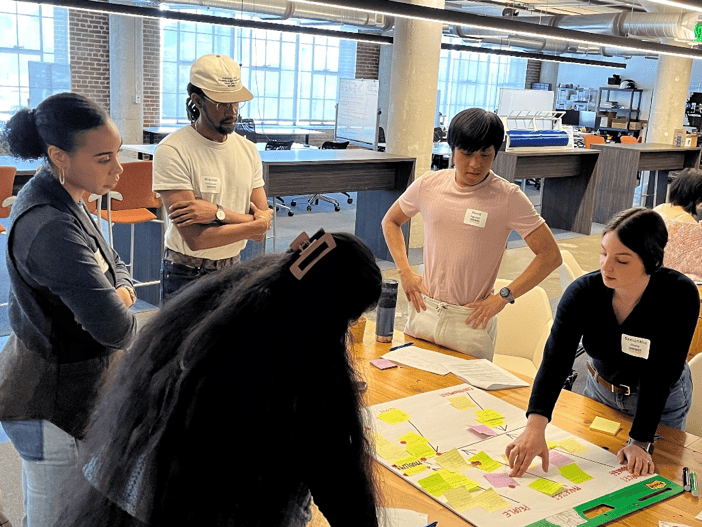
“The personas made it way more personal,” one participant shared. “Suddenly, economic equity wasn’t just a policy issue. It was something I could feel—and something I might be responsible for.”
From there, teams reframed the overarching design question into ones specific to their assigned character. What would it take for a corporate leader like Kyle to meaningfully hire from historically excluded communities? What might a nonprofit leader like Cynthia need to influence cross-sector investments? Ideas flowed—from public-private hiring guarantees to equity-focused procurement reforms to neighborhood entrepreneurship pipelines.
But we didn’t stop at the idea stage. Using a “What Would Have to Be True?” framework from IDEO U’s Designing Strategy, teams interrogated their solutions. What assumptions were we making? What barriers could derail these strategies? And what would real-world testing look like?
Reimagining What Business School Teaches Us
The workshop also revealed something deeper—about business education itself.
“This wasn’t just a workshop,” an undergraduate fellow said. “It felt like a counter-narrative. Most of our training is still built around winning—around competing to have the best idea. But what if collaboration was how we actually demonstrated excellence?”
That insight resonated. Traditional case competitions reward speed, polish, and persuasion. But design thinking rewards something harder to measure: trust-building, systems-sensing, and a bias toward co-creation. In other words, the kinds of leadership traits Atlanta—and cities like it—desperately need.
It left me and others within the BSI world wondering:
How might we integrate more spaces for co-design and collective action into business education, so that future leaders are equipped to solve systemic challenges with communities, not just for them?
What We Took With Us
As we wrapped, the room held a quiet urgency—and a few clear takeaways that still echo:
- Collaboration beats competition every time. Case competitions train us to win. Design thinking trains us to listen. When we center shared understanding over sharp elbows, the opportunity space for real innovation can breathe.
- Empathy is our superpower. Seeking to find ways to truly step into others’ shoes—whether fictional personas or real-world stakeholders—unlocks insights no spreadsheet ever could. Empathy isn’t just a phase in the process; it’s the fuel for good design and good business.
- Design thinking drives action. This wasn’t just a brainstorm. It was a launchpad. Participants left with tangible takeaways, strategic roadmaps, recommendations, and a deeper commitment to their work in and beyond the City of Atlanta.
From Sprint to Systemic Change
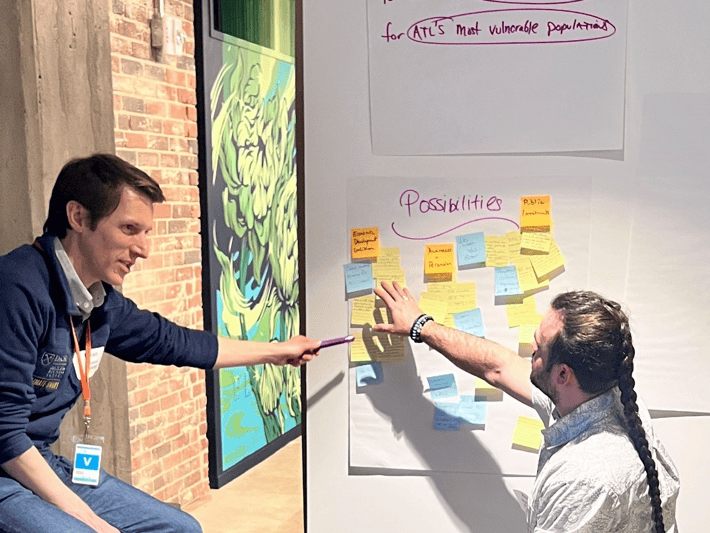
This experience reminded me that inclusive innovation doesn’t happen by accident. It happens when we intentionally design for it—together. While this sprint lasted just one day, it planted something powerful: a shared belief that cross-sector collaboration, rooted in empathy and equity, can unlock new futures for Atlanta (especially in this moment).
The real work is ongoing. And it’s going to take all of us.
So let’s keep listening. Let’s keep building. Let’s keep designing toward the city—and the systems—we all deserve.
For those interested in continuing this dialogue about driving collective action across sectors in Atlanta, please feel free to reach out to me at jasminekburton@gmail.com! And for BSI students and alumni, stay tuned for more opportunities to leverage design thinking to drive social impact in the upcoming school year. The best is yet to come!
